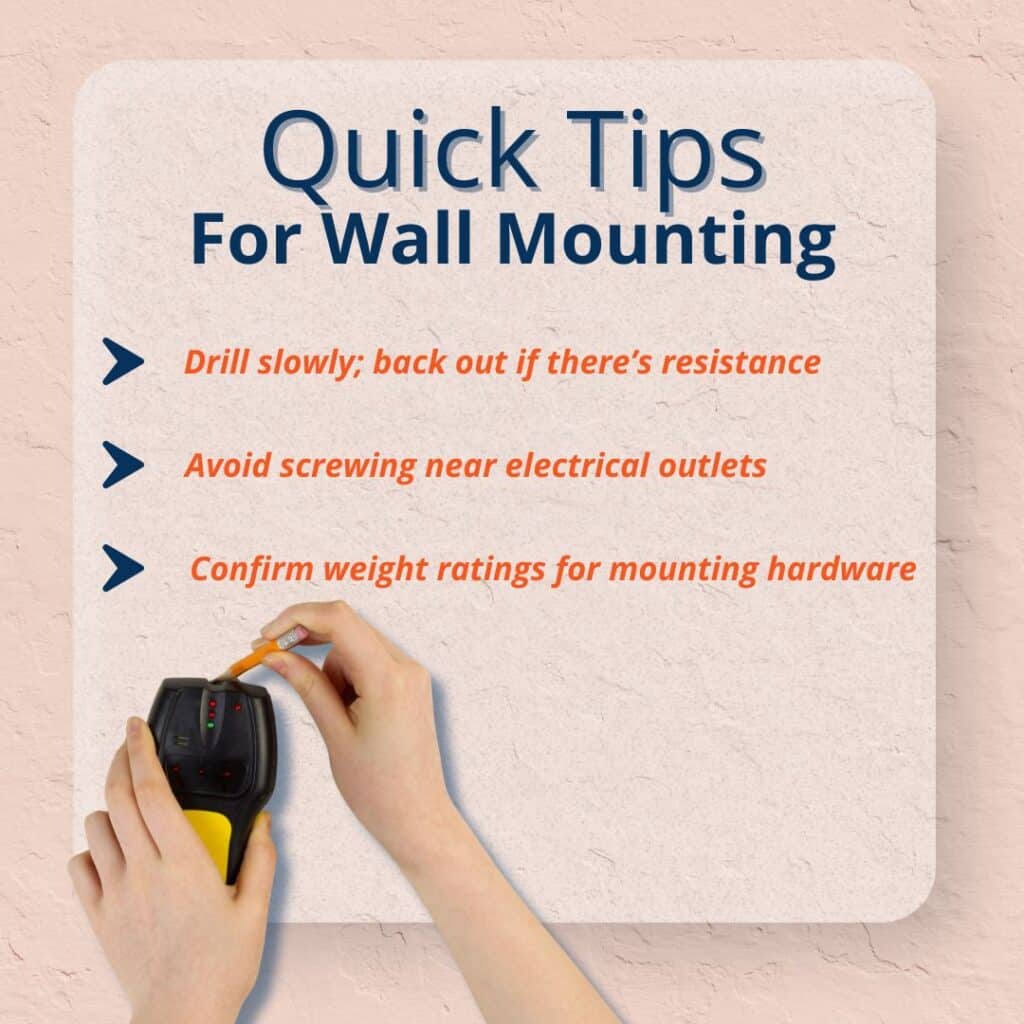Before you hang a TV, mount a shelf, or install new cabinets, it helps to understand what’s behind your walls. Studs are the vertical wooden boards inside your walls that give structure and support. Knowing how wall framing works and how to find a stud can save you from cracked drywall, crooked installations, or worse.
Whether you live in a newer Central Texas home or something with a few decades of history, learning the basics of wall framing and stud spacing will help you handle everyday home projects with confidence.
Table of Contents
ToggleWhat Is Wall Framing?
Wall framing is the internal skeleton of your home. It’s made up of vertical supports called studs, horizontal plates at the top and bottom, and sometimes blocking or bracing, depending on the wall’s purpose. Most residential walls in Central Texas are framed with 2×4 or 2×6 wooden studs, placed 16 or 24 inches apart.
This framework supports drywall, insulation, electrical systems, and anything else attached to the wall. It also gives you secure anchor points for heavy objects like TVs, shelves, or mirrors.

Why Studs Matter When Hanging Heavy Items
Drywall alone is not strong enough to hold much weight. If you screw directly into drywall without hitting a stud, the object can pull loose, tear the wall, or fall entirely. Studs provide the structural support you need to mount:
- Wall-mounted TVs
- Floating shelves
- Large mirrors or art
- Cabinets
- Curtain rods or towel bars
For anything over 15 to 20 pounds, it’s best to anchor directly into a stud to avoid damage or injury.
How to Find a Stud in Your Wall
There are a few reliable ways to locate a wall stud before drilling or hanging anything.
1. Use a Stud Finder
This is the easiest and most accurate method. A stud finder uses sensors to detect changes in wall density and indicate where the stud edges or center are.
Tips for using a stud finder:
- Start about 16 inches from a corner or outlet
- Calibrate the tool before scanning
- Move slowly in a straight line
- Mark both edges to confirm the center
2. Knock and Listen
Tap the wall lightly with your knuckles. A hollow sound usually means no stud. A solid thud suggests a stud is behind that spot.
3. Measure from Electrical Outlets or Switches
Outlet and switch boxes are usually mounted to the side of a stud. Measure in 16-inch increments from the box to estimate the next stud location.
4. Look for Fasteners or Drywall Seams
If you spot screw heads or dimples along a vertical line in the drywall, you may be able to trace the stud layout.
Common Stud Spacing
| Stud Spacing | Where It’s Found |
| 16 inches | Load-bearing and interior walls |
| 24 inches | Exterior or garage walls |
| Irregular | Older homes or past remodels |
Newer Central Texas homes often use 16-inch on-center framing. Older or custom-built homes may vary.
What’s Behind the Wall Besides Studs?
Even when you find the right stud, you need to avoid what else might be inside the wall. Before you drill, keep these in mind:
- Electrical wires, especially near outlets and switches
- Plumbing pipes, often located in bathrooms or kitchens
- HVAC ducts and vents, which may run behind walls or ceilings
Use extra caution near bathrooms, kitchens, and utility rooms. When in doubt, a wall scanner or home inspection can help.

Wall Framing and Home Projects
Understanding wall framing is helpful for more than just mounting decor. It plays a role in:
- Remodeling or removing walls
- Adding outlets, plumbing, or insulation
- Planning safe and efficient DIY projects
- Identifying non-standard construction or past repairs
At Centex Inspection Services, we often identify issues behind the walls that homeowners would never spot on their own.
Tips for Safe Mounting
- Use wood screws or lag bolts when mounting into studs
- Drill slowly and back out if resistance changes suddenly
- Avoid screwing near electrical outlets or plumbing access points
- Use drywall anchors only for light-duty items when a stud is not available
- Confirm the weight rating of any mounting hardware you use
When to Call a Professional
If you are not sure what is behind your walls or you suspect something unusual with your framing, it’s time to get a second opinion. A home inspection can help you avoid costly mistakes and give you a clearer picture of your home’s interior layout.
You should consider calling a professional if:
- Your stud finder gives inconsistent readings, or you cannot locate a stud
- You are mounting something heavy and want to be sure it is secure
- You suspect there may be wiring or plumbing behind the wall
- The wall feels soft, uneven, or shows signs of water damage
- You are planning any renovation that involves removing or modifying a wall
At Centex Inspection Services, we help Central Texas homeowners understand their homes from the inside out. We inspect framing, look for hidden risks, and offer expert advice before you start a project or invest in a home.
Conclusion
A general understanding of stud spotting and wall framing is one of the most important, but often overlooked, parts of owning a home. Understanding how it works and how to find a stud can prevent damage, improve safety, and make DIY projects much easier.
If you are unsure about what’s behind your walls or want professional insight before drilling, schedule a home inspection with Centex Inspection Services. We are here to help you make confident, informed decisions.




